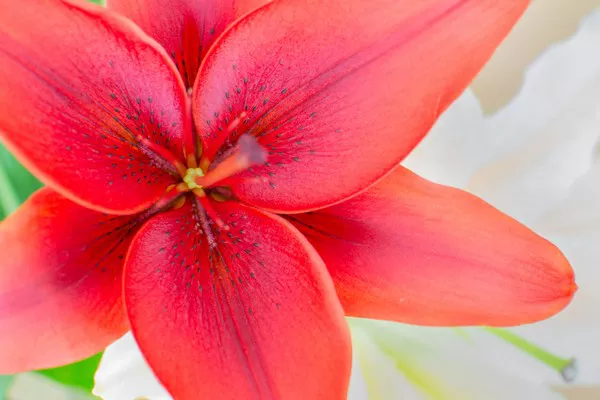In the delicate language of flowers, each blossom carries a unique message and symbolism. For centuries, cultures worldwide have associated certain flowers with healing properties, whether physical, emotional, or spiritual.
The Universal Symbolism of Flowers: Nature’s Therapeutic Language
Flowers have long been recognized as powerful symbols with the ability to convey emotions, sentiments, and, notably, healing intentions. Across diverse cultures and traditions, the act of gifting or cultivating specific flowers is often linked to the desire for well-being and recovery. This universal symbolism transcends linguistic barriers, allowing flowers to serve as messengers of hope, comfort, and healing in times of adversity.
Lavender: A Fragrant Oasis of Calmness and Restoration
Lavender, with its soothing fragrance and delicate purple spikes, is a well-known symbol of tranquility and healing. Renowned for its calming properties, lavender has been used for centuries in aromatherapy and herbal remedies to alleviate stress and promote relaxation. The act of incorporating lavender into bouquets, sachets, or essential oils embodies a desire for peace and rejuvenation, making it a cherished flower for those seeking solace and healing.
Calendula: A Burst of Golden Healing Energy
Calendula, also known as marigold, is celebrated for its vibrant golden petals and healing properties. Beyond its visual appeal, calendula is renowned for its anti-inflammatory and skin-soothing qualities. Often used in herbal salves and ointments, calendula represents not only physical healing but also renewal and resilience. The sunny disposition of calendula serves as a reminder that, like the flower itself, healing is a process of embracing warmth and growth.
Echinacea: The Purple Coneflower’s Immune-Boosting Power
The Echinacea, commonly known as the purple coneflower, is valued for its immune-boosting properties. Traditionally used by Native American communities for its medicinal benefits, Echinacea has become a symbol of strength and vitality. The distinctive purple petals surrounding a spiky orange-brown cone convey resilience and the potential for renewal. As a flower associated with fortifying the immune system, Echinacea symbolizes the strength to overcome challenges and restore well-being.
Chamomile: The Gentle Emissary of Calm and Restoration
Chamomile, with its dainty white flowers and apple-like aroma, is a gentle ambassador of calmness and restoration. Recognized for its calming effects, chamomile has been used for centuries in teas and herbal remedies to promote relaxation and alleviate stress. In the language of flowers, presenting chamomile signifies a wish for peace, emotional healing, and a respite from life’s challenges.
Aloe Vera: Succulent Symbol of Physical Healing
Aloe vera, although not a traditional bloom, is a succulent plant with powerful healing properties. Revered for its ability to soothe and heal skin ailments, cuts, and burns, aloe vera is a symbol of physical recovery. The gel extracted from its fleshy leaves has been used for centuries for its hydrating and regenerative effects, embodying the notion that nature itself provides the tools for physical healing and renewal.
Peony: Blooms of Compassion and Good Health
The peony, with its lush and opulent blooms, carries significant symbolism in various cultures. In traditional Chinese medicine, the peony is associated with good health, healing, and prosperity. The extravagant and vibrant petals convey compassion and well-wishing. Gifting or cultivating peonies is a gesture that extends beyond mere aesthetics, symbolizing a wish for robust health and a life filled with flourishing vitality.
Hyssop: Ancient Herb of Cleansing and Purification
Hyssop, a fragrant herb with spikes of blue, pink, or white flowers, has ancient roots in medicinal and ritualistic practices. In various cultures, hyssop has been associated with cleansing and purification. The act of incorporating hyssop into bouquets or gardens is symbolic of the desire for not only physical cleansing but also spiritual and emotional renewal. Hyssop’s aromatic presence signifies the pursuit of a healing environment.
Yarrow: The Resilient Herb of Healing and Protection
Yarrow, a resilient herb with feathery foliage and clusters of tiny flowers, has long been revered for its healing properties. Traditionally associated with protection and divination, yarrow is symbolic of resilience and healing energy. Including yarrow in floral arrangements or gardens signifies a desire for strength, protection, and the restoration of overall well-being.
Heliotrope: Turning Toward the Sun for Healing
Heliotrope, named for its tendency to turn towards the sun, carries symbolism rooted in the pursuit of healing energy. With clusters of fragrant, purple flowers, heliotrope is associated with vitality and positive life force. In the language of flowers, heliotrope conveys the intention to seek healing energy, both physically and spiritually, by turning towards sources of light and positivity.
Iris: Messenger of Hope and Restoration
The iris, with its intricate and vibrant blooms, is often considered a messenger of hope and restoration. In Greek mythology, the goddess Iris was the link between the divine and mortal realms, carrying messages of renewal and connection. The elegant and diverse colors of irises, including various shades of pink, symbolize the unfolding of new chapters and the restoration of balance and harmony.
Daisy: Simple Beauty and Emotional Healing
The daisy, with its simple yet radiant beauty, carries profound symbolism in the language of flowers. Daisies, including varieties with pink petals, are often associated with emotional healing and innocence. The innocence and purity conveyed by daisies extend a message of hope, simplicity, and the potential for emotional healing and renewal.
Conclusion
In the intricate language of flowers, each bloom represents more than just a visually appealing ornament. Flowers have been revered across cultures for their ability to convey profound messages, including wishes for healing and restoration. Whether it’s the calming fragrance of lavender, the vibrant hues of peonies, or the resilient nature of yarrow, each flower symbolizes the universal desire for well-being, recovery, and the renewal of the human spirit. In gifting or cultivating these blossoms, individuals tap into a centuries-old tradition of using nature’s emissaries to express sentiments of healing and restoration.


